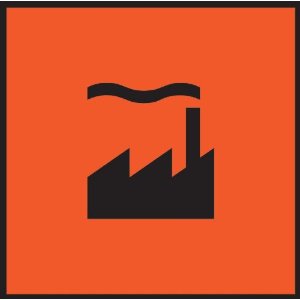With its ties to both acid house at the Hacienda and the Madchester scene that followed, it’s easy to forget just how closely linked Factory Records had been with dance music in the years prior to 1988. As this compilation of 12” mixes from Strut shows, it was in the interaction with the clubs of both Manchester and beyond that Factory forged its own identity in the post-punk era. And it’s that close relationship that made the dance sounds of the label such a vital and important part of UK club culture; a lineage that continues today through imprints like Warp and Ninja Tune.
It was through New Order’s trips to clubs like the Paradise Garage, Danceteria and the Funhouse in New York that the idea for the Hacienda came about. It was also where relationships with producers like Arthur Baker, Jellybean Benitez and Mark Kamins were formed. This compilation includes some of those resulting collaborations, with Mark Kamins’ electro remix of Quando Quango’s ‘Atom Rock’ and Jellybean’s mix of 52nd Street’s ‘Cool As Ice’ still sounding relevant today. It was also in New York where A Certain Ratio would record their LP To Each in 1981. After hanging out on the Lower East Side, soaking up the sounds on the streets and playing with ESG (whose ‘Moody’ was released on both Factory and 99 Records in New York), they returned to Manchester armed with whistles and congas to record the killer Nuyorican-infused funk of Sextet. As you can hear on the brilliant ‘Knife Slits Water’, this LP took the bleak funk evident on tracks like ‘Wild Party’ to new levels and confirmed them as Factory’s heaviest dance band.
At the same time, the ears of New York were wide open to the sounds coming from Northern England, with tracks like Section 25’s ‘Looking from a Hilltop’ (the prescient slab of electronic music that opens this LP) and Quando Quango’s ‘Love Tempo’ bona fide classics with everyone from Larry Levan to Jellybean. And much of the credit for that must go to producer Martin Hannett and his heavy and haunting sound. "Great producers normally just do one thing and that usually goes hand in hand with technology,” recalled the late founder of Factory, Tony Wilson. “I remember Martin said to me that just as I could name the moments in history when music changed, he could name the engineer, studio and piece of equipment involved." Hannett’s own innovations had begun with Joy Division and continued with ESG, one of the most sampled bands in hip hop, as Tony Wilson explained: "The first time he moved music forward was with the digital delay machine, which changed drum sounds forever… That was Martin Hannett in a New York basement with three great singers.” As Mancunian legend and drummer for The Durutti Column Bruce Mitchell explained, Hannett was obsessive about sound: "I knew him when he was a student and he was very strict with himself. He’d go without food to buy the most expensive new speakers… He was always after specialist sound equipment.” Deep, dubby and extremely funky, the stark and skeletal sounds that emerged from Hannett’s mixing desk were the perfect match for the high-end and heavy bass sound systems of New York.
While the Hacienda’s heyday was undoubtedly 1988-89, the years prior to E arriving in the city were vitally important to UK dance culture in setting the foundations. Alongside the incongruous but creative mix of raincoated students and sharp-suited jazz dancers were Factory artists like ACR and the club’s future DJ Mike Pickering from Quando Quango, listening and learning from DJ Hewan Clarke. This largely uncredited spinner had learned his trade in a number of clubs whose role in Manchester’s counterculture is often forgotten. Whether it was the jazz dance played at Berlin, the hip hop at The Gallery or the electro and early house of the Playpen (or the jazz funk all-dayers that took place across the North and the Midlands), many of the musicians featured on this compilation got their first taste of dance music in these less celebrated clubs. And the sound of the underground echoes through the 24 tracks here, whether on the superb Brit soul of 52nd Street or the avant-jazz funk of Swamp Children.
Factory acts weren’t just copying the sounds they heard in the clubs, instead creating their own unique and distinctly Northern brand of dance music, with the raw energy of punk and the dark shadow of Thatcherism never far away. Just check the agitated cold wave funk of ‘Art On 45’ from Liverpool’s Royal Family and the Poor, one of the label’s lesser known acts, for a taste of the times. It wasn’t only to Northern England that Factory looked though, with lesser-known acts like Berlin’s Shark Vegas and L.A.’s Abecedarians welcome additions to compiler Bill Brewster’s deep dip into the label’s catalogue.
So for those whose reference points to Factory were Joy Division and New Order or thought that the label’s funk began with Bez’s freaky dancin’, this is a comprehensive introduction to how Factory rocked the dance throughout the ‘80s. And for collectors who know their Factory inside out, it’s time to revel in obscurities from the likes of X-O-Dus and The Hood. Essential!


